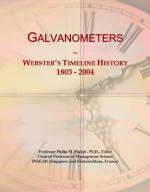|
This section contains 449 words (approx. 2 pages at 300 words per page) |

|
The galvanometer, a device used to measure extremely small electrical currents, traces its origin back to 1820. In that year Hans Christian Oersted (1777-1851) discovered that an electric current flowing in a wire created a magnetic field around it, deflecting a magnetized needle. This effect became the basic principle behind the galvanometer. In the same year André Ampère (1775-1836) used the effect to invent a device to measure electric current. He suggested it be called the galvanometer, in honor of Luigi Galvani (1737-1798), a pioneer in the investigation of electricity.
The first practical use of the galvanometer was made by Karl Friedrich Gauss in 1832. Gauss built a telegraph that sent signals by deflecting a magnetic needle. This style is known as a moving-magnet galvanometer. More commonly used today is the moving-coil or moving-mirror galvanometer, sometimes called a D'Arsonval galvanometer.
The invention of the moving-coil galvanometer is...
|
This section contains 449 words (approx. 2 pages at 300 words per page) |

|


